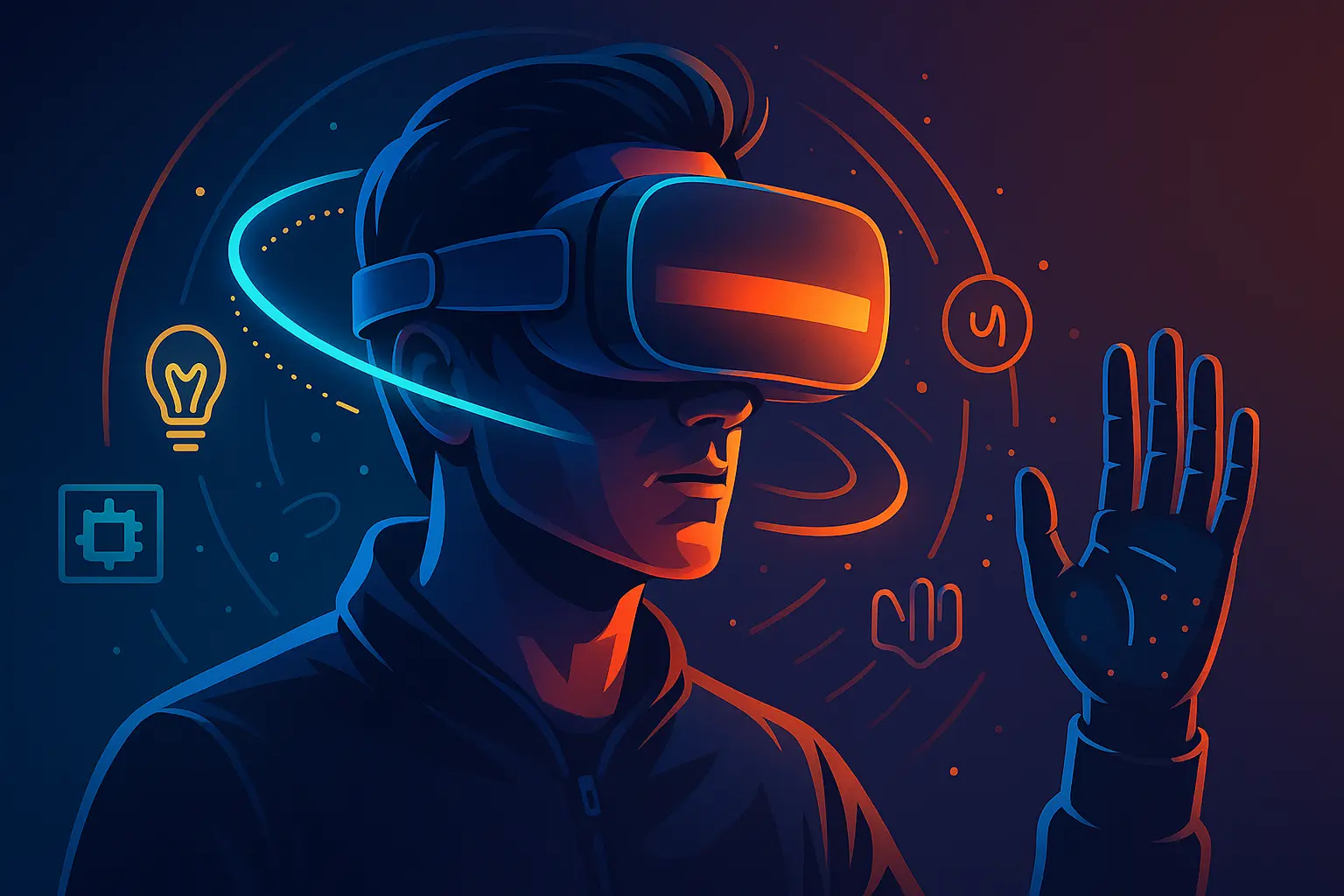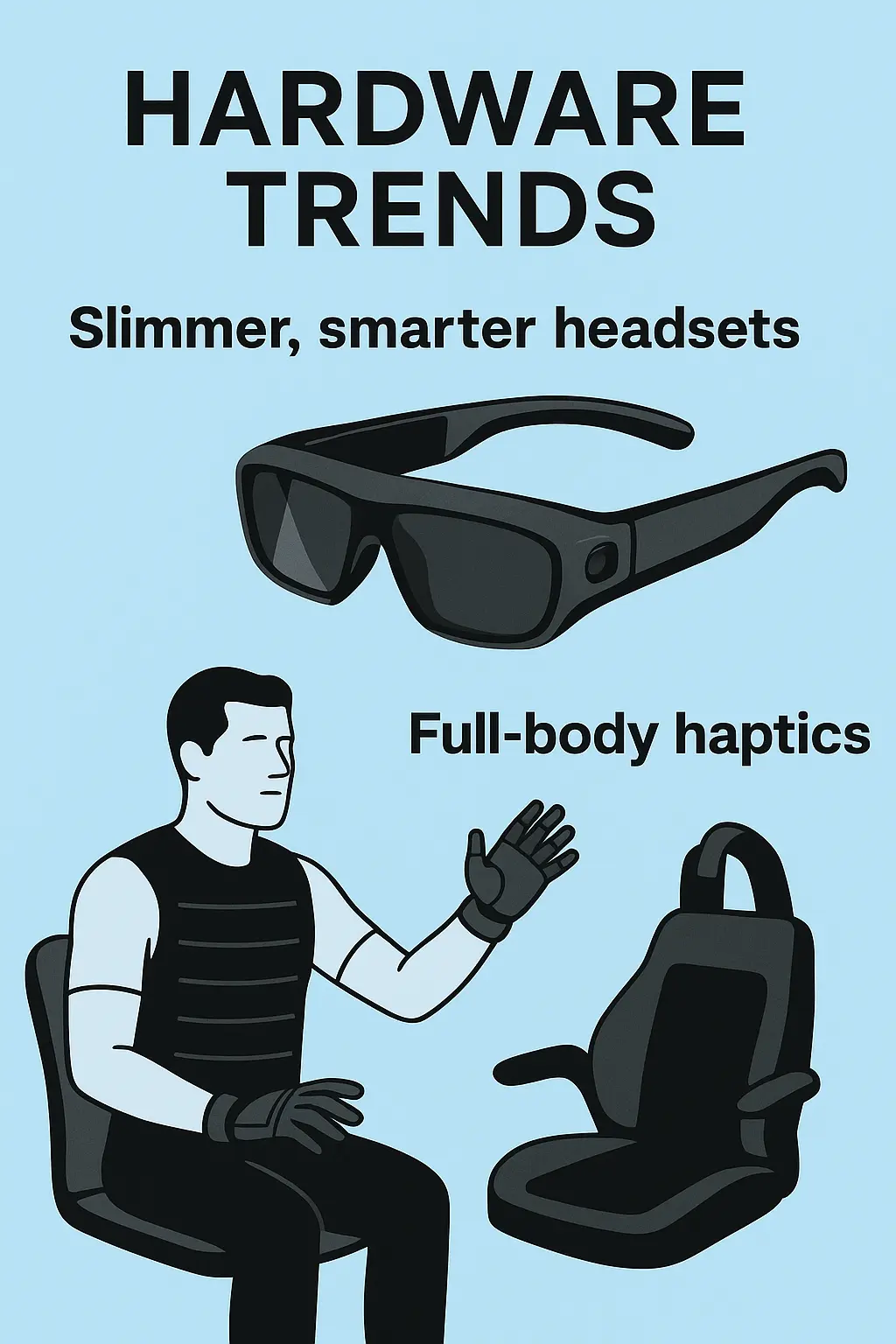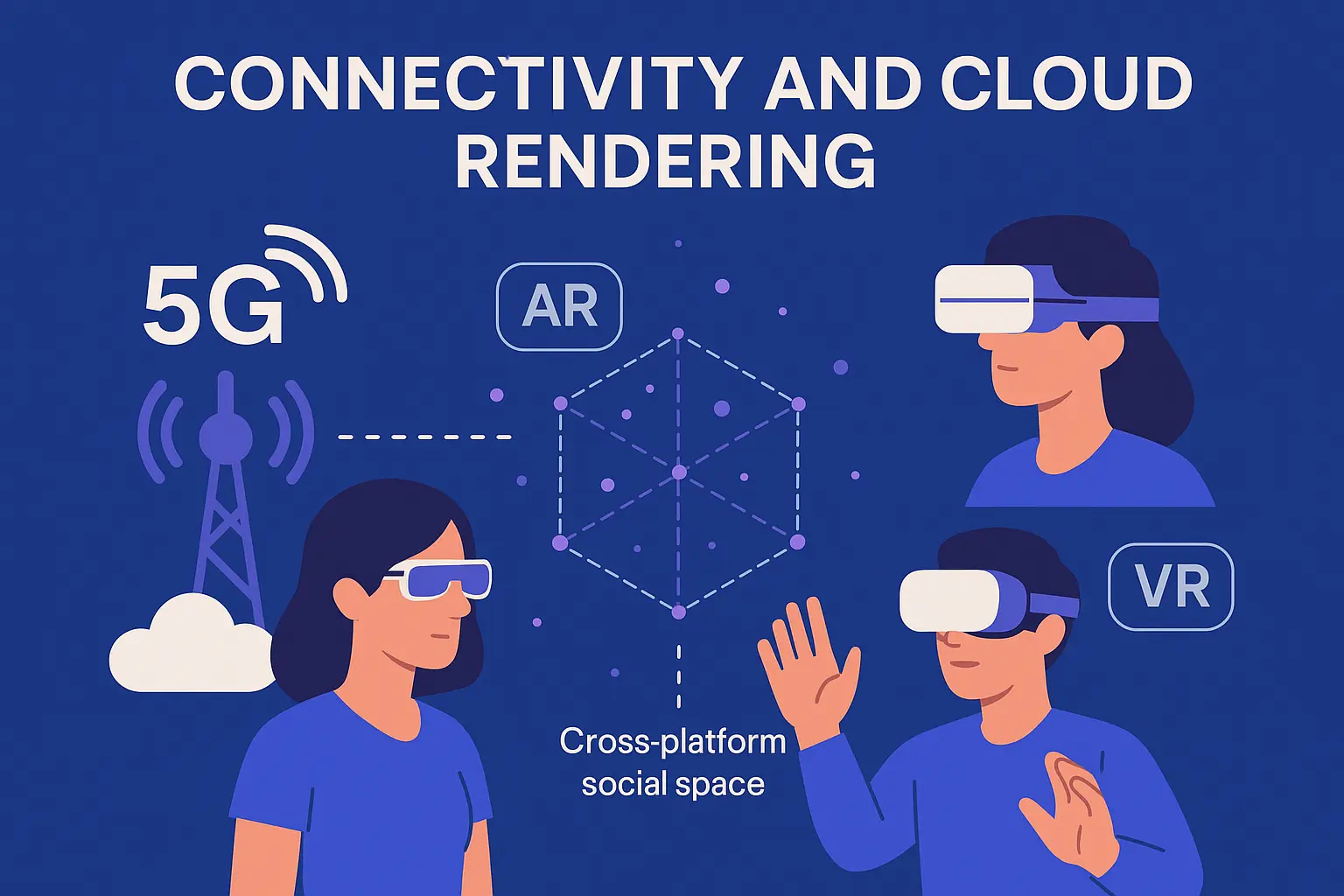
A wave of fresh headsets, haptic wearables, cloud rendering, and generative AI tools is reshaping how players will experience augmented and virtual reality in 2025. Analysts forecast sharp market growth, and device makers are launching lighter glasses, sharper visuals, and full‑body feedback. Below is a detailed look at the hardware, software, and network advances that define the next chapter of immersive play.
The global VR gaming market is projected to add more than 30 billion dollars between 2024 and 2029, reflecting a compound annual growth rate above 30 percent. Industry reports peg 2025 VR gaming revenue at just over 41 billion dollars, up from 32 billion in 2024. Content sales on major storefronts have already surpassed 2.9 billion dollars, confirming steady consumer demand.
Reality Labs reported a dip in quarterly revenue as standalone headset sales cooled, though AR smart‑glasses helped offset the decline. Apple’s premium Vision Pro set new standards for optics and mixed‑reality passthrough, prompting rivals to improve display clarity and comfort.
Wireless AR glasses weighing close to 130 grams now offer reliable hand tracking and spatial mapping. Enterprise‑grade models hint at consumer variants with similar form factors. Eye tracking has matured, enabling foveated rendering that cuts processing load while boosting visual fidelity.
Tactile vests with dozens of vibration motors support hundreds of native VR titles and can convert any audio signal into physical feedback. Hybrid haptic gloves combine physical buttons with force feedback for natural interaction, and seat accessories add lower‑body cues for racing simulators.

Roughly one in five new PC games now uses generative AI for textures, dialogue, or procedural environments, slashing production time and broadening game worlds. Developers emphasize AI as an accelerant, not a replacement, for human creativity.
Multi‑sensory feedback blends realistic graphics with spatial audio, scent modules, and thermal cues to deepen presence. Haptic wearables translate game data into precise vibration patterns, letting players feel recoil, rain, or enemy footsteps in real time.
Combining 5G with edge computing pushes latency into single‑digit milliseconds, enabling cloud‑hosted VR experiences on lighter client hardware. Nearby edge nodes handle rendering, allowing seamless AR overlays in mobile titles without tethered PCs.
Developers are crafting persistent worlds that blend AR and VR layers. Players wearing lightweight AR glasses can join friends using full VR rigs, creating a shared experience instead of siloed play.

Analysts predict transparent OLED waveguide headsets, full‑body haptic suits under five hundred dollars, and AI‑driven worlds that adapt to each player. Combined with cloud rendering over low‑latency 5G, immersive play in 2025 will feel less like an isolated simulation and more like a seamless extension of daily life.
Is VR gaming still growing in 2025?
Yes. Forecasts show VR gaming revenue topping forty‑one billion dollars in 2025, with strong growth expected through 2029.
What is the biggest hardware leap this year?
The shift to ultralight AR glasses with advanced hand and eye tracking marks the most significant hardware improvement.
How important is generative AI?
Approximately twenty percent of new games use AI for art, code, or real‑time content, greatly accelerating development cycles.
Do I need a high‑end PC for VR in 2025?
Not necessarily. Cloud streaming over 5G and edge servers lets standalone headsets run complex scenes with minimal lag.
Will haptics go mainstream?
Affordable vests, gloves, and seat accessories indicate that tactile feedback is poi














From breaking news to thought-provoking opinion pieces, our newsletter keeps you informed and engaged with what matters most. Subscribe today and join our community of readers staying ahead of the curve.
From breaking news to thought-provoking opinion pieces, our newsletter keeps you informed & engaged.